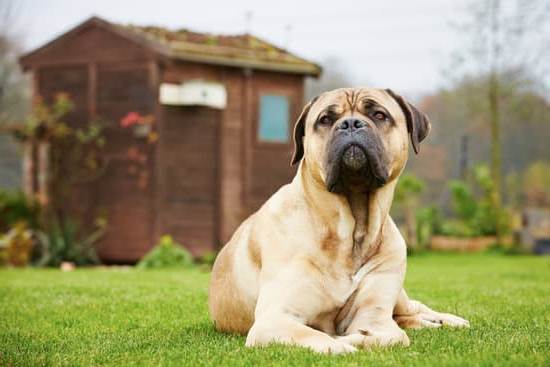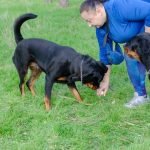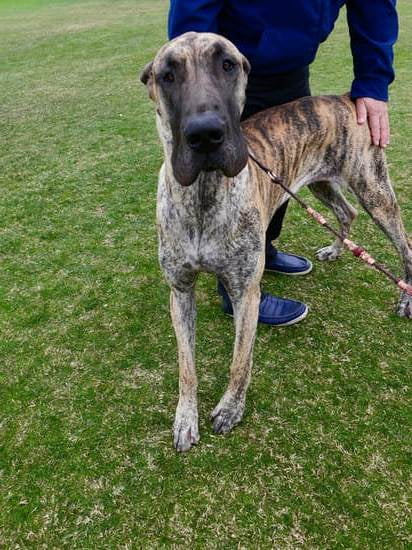Pitbulls are often misunderstood and stigmatized for being aggressive towards other dogs, but with the right training and socialization, they can learn to coexist happily with their furry counterparts. In this article, we will delve into how to train a pitbull to like other dogs, focusing on understanding their behavior, addressing common misconceptions about them, and the importance of socialization.
Pitbull behavior is influenced by genetics, environment, and owner handling. It is essential to recognize that not all pitbulls exhibit aggression towards other dogs inherently; many factors play a role in shaping their temperament. By understanding their behavior patterns and learning how to effectively communicate with them, owners can help their pitbulls develop positive interactions with other dogs.
Socialization plays a crucial role in shaping a pitbull’s attitude towards other dogs. Early exposure to various environments, people, and animals can help prevent fear-based aggression and promote social skills. By following specific steps and positive reinforcement techniques outlined in this article, owners can guide their pitbulls towards building trust and confidence around other dogs gradually. Stay tuned as we explore effective strategies for introducing your pitbull to new canine friends while fostering a harmonious relationship between them.
Common Misconceptions About Pitbulls and Dog Aggression
Pitbulls have unfortunately gained a reputation for being aggressive and dangerous dogs, largely due to misconceptions and stereotypes. One of the most common misconceptions is that all Pitbulls are inherently aggressive towards other dogs. This belief can lead to fear and discrimination against the breed, which is undeserved. In reality, a Pitbull’s behavior towards other dogs is influenced by various factors such as socialization, training, and past experiences.
To address these misconceptions, it is essential for owners to understand that dog aggression is not specific to any one breed but can occur in any dog, regardless of their breed. It is crucial to look at each dog as an individual and not stereotype based on their breed. With proper training, socialization, and responsible ownership, Pitbulls can learn to get along with other dogs in a harmonious manner.
One effective way of overcoming misconceptions about Pitbull aggression towards other dogs is through education and advocacy. By spreading awareness about how to train a Pitbull to like other dogs, we can help change the negative perceptions surrounding the breed. Through positive interactions and proper training techniques, Pitbull owners can show that these dogs are loving, social animals capable of forming strong bonds with other pets.
| Key Point | Details |
|---|---|
| Misconception about Pitbull Aggression | Not all pit bulls are inherently aggressive towards other dogs. |
| Importance of Individual Assessment | Dog aggression is not specific to any one breed; it depends on various factors. |
| Educating for Change | Advocating for proper training techniques can help change negative perceptions about Pitbulls. |
Importance of Socialization for Pitbulls
Pitbulls are often misunderstood and can face unfair stereotypes due to their breed. One common misconception is that all Pitbulls are inherently aggressive towards other dogs. However, the truth is that dog aggression in Pitbulls, or any breed for that matter, typically stems from a lack of proper socialization and training. This is why it is crucial for Pitbull owners to focus on socializing their furry friends from a young age to ensure they can interact positively with other dogs.
Socialization plays a key role in shaping a Pitbull’s behavior and temperament. By exposing them to different environments, people, and animals early on, you can help your Pitbull learn appropriate social skills and develop confidence in various situations. This exposure will also help prevent fear-based aggression towards other dogs in the future.
So, how to train a pitbull to like other dogs? The answer lies in consistent and positive interactions with other canines. Start by introducing your Pitbull to well-behaved and friendly dogs in controlled settings.
Use positive reinforcement techniques such as treats, praise, and playtime to reinforce good behavior when they are around other dogs. Gradually increase the complexity of these interactions as your Pitbull becomes more comfortable, always monitoring their body language for signs of stress or discomfort. Remember that patience and consistency are key when socializing your Pitbull to like other dogs.
Steps to Introducing Your Pitbull to Other Dogs
Introducing your pitbull to other dogs can be a challenging but rewarding process. With patience, consistency, and positive reinforcement training techniques, you can help your pitbull build positive associations with other dogs and learn how to interact peacefully. Here are some steps to take when introducing your pitbull to other dogs:
- Start Slowly: Begin by introducing your pitbull to one calm, well-behaved dog in a neutral territory. Keep both dogs on a leash and allow them to sniff each other while remaining calm.
- Monitor Body Language: Watch for signs of stress or aggression in both dogs, such as stiff body posture, raised hackles, growling, or lunging. If either dog shows signs of discomfort, calmly separate them and try again later.
- Gradually Increase Exposure: As your pitbull becomes more comfortable around other dogs, gradually increase the number of dogs in the group and the complexity of the environment. This could include visiting a dog park or attending obedience classes with other dogs present.
Using these steps can help you establish a positive foundation for your pitbull’s interactions with other dogs and set them up for success in social situations. Remember that every dog is unique, so be patient and adapt your approach based on your pitbull’s individual needs.
It is important to remember that training a pitbull to like other dogs takes time and dedication. By using positive reinforcement techniques consistently and providing plenty of opportunities for socialization, you can help your pitbull overcome any fear or aggression towards other dogs. With patience and perseverance, you can help your pitbull become a well-socialized and confident member of the canine community.
Positive Reinforcement Training Techniques for Pitbulls
Positive reinforcement training techniques are essential when it comes to training a pitbull to like other dogs. These techniques focus on rewarding desirable behaviors to encourage their repetition, which can be highly effective in shaping the behavior of your pitbull in social situations. Here are some positive reinforcement training techniques that you can use to help your pitbull learn to like other dogs:
- Start with basic obedience training: Before introducing your pitbull to other dogs, ensure that they have a good understanding of basic commands such as sit, stay, and come. This will not only improve their overall behavior but also make it easier for you to manage them around other dogs.
- Use treats as rewards: When your pitbull displays positive behavior around other dogs, reward them with treats. This positive association will help them develop a more positive attitude towards interacting with other dogs.
- Gradual exposure: Start by introducing your pitbull to calm and friendly dogs in controlled environments. Gradually increase the duration of these interactions as your dog becomes more comfortable.
By consistently using these positive reinforcement techniques, you can help your pitbull build confidence and trust around other dogs. It is important to be patient and consistent in your training efforts, as every dog learns at their own pace. Remember that the goal is not just for your pitbull to tolerate other dogs but to genuinely enjoy their company.
Remember that consistency is key when using positive reinforcement training techniques with your pitbull. With time, patience, and dedication, you can successfully train your pitbull to like other dogs and enjoy social interactions with them. If you ever find yourself struggling or facing challenges along the way, do not hesitate to seek out professional help from a reputable dog trainer who specializes in working with pitbulls.
Building Trust and Confidence in Your Pitbull Around Other Dogs
Pitbulls are known for their loyalty and affection towards their owners, but they can sometimes struggle with socializing with other dogs. Building trust and confidence in your Pitbull around other dogs is crucial to ensure a positive and safe interaction between them. It’s essential to understand that each dog is an individual with unique experiences and behaviors, so patience and consistency are key when training your Pitbull to like other dogs.
One of the first steps in training your Pitbull to get along with other dogs is through proper socialization from a young age. Exposing your Pitbull to various environments, people, and animals will help them learn how to interact appropriately.
Positive reinforcement techniques, such as rewarding good behavior with treats or praise, can also be effective in shaping your Pitbull’s behavior around other dogs. Consistency in your training approach will help reinforce positive interactions and build confidence in your Pitbull.
It’s important to be mindful of signs of aggression or discomfort in your Pitbull when introducing them to other dogs. Look for body language cues such as stiff posture, raised hackles, growling, or bared teeth, which could indicate potential conflict. If you notice any signs of aggression, it’s crucial to redirect their attention and remove them from the situation calmly.
Seeking guidance from a professional dog trainer or behaviorist can also provide valuable insights on how to train a pitbull to like other dogs effectively. With patience, consistency, and positive reinforcement, you can help your Pitbull develop healthy relationships with other dogs and enjoy social interactions together.
Recognizing Signs of Aggression and How to Address Them
Recognizing Signs of Aggression
One of the key aspects of training a pitbull to like other dogs is being able to recognize signs of aggression. It’s important for pet owners to understand that aggression in dogs can be exhibited through various behaviors such as growling, barking, lunging, or showing teeth. These signs are often indicators that your pitbull is feeling stressed or threatened in a social situation with other dogs. By being aware of these signals, you can intervene before a situation escalates.
How to Address Aggression
When you notice your pitbull displaying signs of aggression towards other dogs, it’s essential to remain calm and composed. Reacting with fear or anxiety can exacerbate the situation and lead to further aggressive behavior.
Instead, try redirecting your dog’s attention by using positive reinforcement techniques like treats or toys to distract them from the trigger. It’s also crucial to remove your dog from the stressful situation and give them space to calm down before attempting any introductions again.
Consulting With a Professional Trainer
If you find that your pitbull continues to display aggressive behavior towards other dogs despite your best efforts, it may be beneficial to seek guidance from a professional dog trainer or behaviorist. These experts have the knowledge and experience in dealing with dog aggression issues and can provide you with specific strategies on how to train a pitbull to like other dogs effectively.
Remember, every dog is unique, and what works for one may not work for another, so personalized guidance can make a significant difference in helping your pitbull overcome their fear or hostility towards other dogs.
Pitbull Breed Specific Legislation (BSL) and Its Impact on Socialization
Pitbull breed-specific legislation (BSL) has been a contentious topic in many communities, often leading to restrictions or bans targeting certain breeds like Pitbulls. This kind of legislation can have a significant impact on the socialization of Pitbulls, as it can create barriers for owners who want to introduce their dogs to other animals in a controlled environment.
Understanding the implications of BSL is crucial for Pitbull owners who are looking to train their dogs to interact positively with other dogs.
The Challenges Posed by BSL
One of the main challenges that Pitbull owners face under BSL is the difficulty in finding opportunities for socialization. Many public spaces, such as parks and dog daycare facilities, may have restrictions on allowing Pitbulls due to breed-specific regulations.
This can limit the exposure of Pitbulls to different dogs and hinder their ability to learn appropriate behavior through positive interactions. Additionally, the negative stereotypes perpetuated by BSL can also impact owner perception, leading to heightened anxiety and tension during introductions with other dogs.
Addressing BSL Restrictions Through Private Socialization
Despite the challenges posed by BSL, there are still ways for Pitbull owners to socialize their dogs effectively. One option is organizing private play dates or training sessions with trusted friends or family members’ dogs in a controlled environment.
By creating opportunities for positive interactions away from public spaces affected by breed-specific regulations, Pitbull owners can focus on building their dog’s confidence and trust around other animals. Additionally, enrolling in obedience classes or hiring a professional trainer experienced in working with restricted breeds like Pitbulls can provide tailored guidance on how to train a Pitbull to like other dogs while navigating BSL restrictions.
Pitbull Success Stories
One of the key aspects of learning how to train a pitbull to like other dogs is understanding that every dog is an individual with its own personality traits and experiences. While some pitbulls may have a natural affinity towards other dogs, others may be more reserved or even display signs of aggression initially. It is crucial for pitbull owners to approach the process of socialization with patience, consistency, and positive reinforcement.
One successful method that many pitbull owners have found effective in helping their dogs get along with other canines is gradual desensitization and counter-conditioning. This involves exposing your pitbull to other dogs in controlled environments, starting from a distance where your dog feels comfortable and slowly decreasing the distance over time as they become more relaxed. Pairing these interactions with rewards such as treats or praise can help create positive associations with meeting new dogs.
Another important factor in helping your pitbull learn to love other dogs is providing plenty of opportunities for supervised playdates and interactions with well-socialized dogs. Allowing your pitbull to engage in positive play behaviors and rewarding good behavior during these interactions can go a long way in building their confidence and social skills.
Additionally, seeking guidance from a professional dog trainer or behaviorist who has experience working with pitbulls can provide valuable insights and personalized strategies for addressing any specific challenges you may encounter.
| Success Tips | Description |
|---|---|
| Gradual Desensitization | Expose your pitbull to other dogs slowly, starting from a distance they are comfortable with. |
| Supervised Playdates | Allow your pitbull to interact with well-socialized dogs under supervision to build social skills. |
| Professional Guidance | Seek help from experienced trainers or behaviorists for personalized strategies. |
Resources and Support for Pitbull Owners Looking to Improve Socialization Skills
In conclusion, training a pitbull to like other dogs is not an impossible task. It requires patience, consistency, and understanding of the breed’s unique characteristics. By following the steps outlined above and using positive reinforcement techniques, pitbull owners can gradually help their pets develop positive associations with other dogs.
One key aspect of successful socialization is recognizing signs of aggression and addressing them promptly. This involves closely monitoring interactions between your pitbull and other dogs, as well as ensuring that any negative behavior is corrected in a calm and assertive manner. Building trust and confidence in your pitbull around other dogs is crucial in fostering positive relationships.
It is also important for pitbull owners to seek out resources and support to further enhance their socialization skills. Whether it’s enrolling in training classes, consulting with a professional dog trainer, or connecting with online communities of experienced pitbull owners, there are plenty of avenues for support. With dedication and the right tools, pitbulls can learn to not only tolerate but genuinely enjoy the company of other dogs.
Frequently Asked Questions
How Do I Stop My Pitbull From Attacking Another Dog?
One way to prevent your Pitbull from attacking another dog is by properly socializing and training them from an early age. Gradual exposure to other dogs in controlled settings can help desensitize them to potential triggers.
How Do I Control My Pitbull Dog Aggression?
Managing your Pitbull’s aggression involves consistent training, establishing clear rules and boundaries, and seeking professional help if needed. Positive reinforcement techniques can be effective in redirecting their behavior and promoting calmness.
Can You Train a Pitbull to Be Friendly?
Yes, Pitbulls can be trained to be friendly through positive reinforcement training methods that focus on rewarding desired behaviors. Consistent socialization with other dogs, proper obedience training, and patience are key in shaping their friendly demeanor.

Welcome to the blog! I am a professional dog trainer and have been working with dogs for many years. In this blog, I will be discussing various topics related to dog training, including tips, tricks, and advice. I hope you find this information helpful and informative. Thanks for reading!





